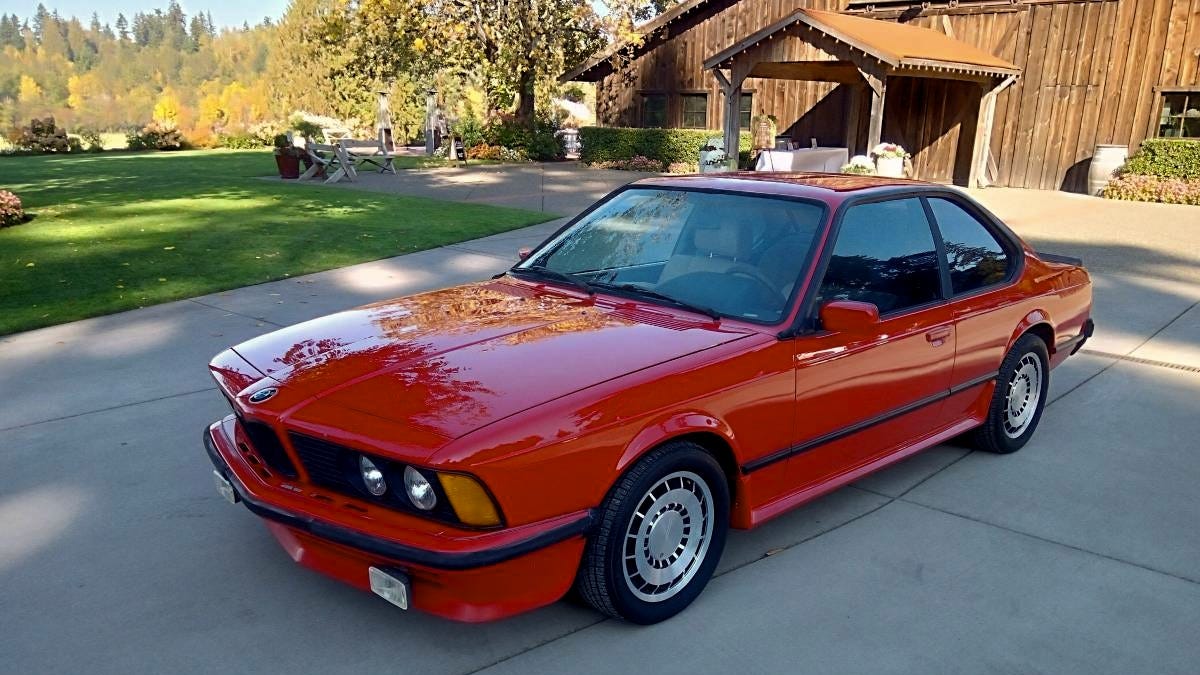An automatic transmission makes today’s Nice Price or No Dice 635CSi more like a cruiser than a sports coupe. Let’s see what we make of this privately-imported classic Bimmer’s price tag.
The name ‘mustang’ derives from the Spanish mestengo, which means “wild, stray, or having no master.” The 2012 Ford Mustang GT we considered yesterday was pretty wild, even being described by its seller as a race car for the street. Even wilder was the $20,000 asking price that the seller set. You all weren’t too wild about that, sending the ’Stang back to the corral with a hefty 81 percent No Dice loss.
The Mustang could generally be considered ‘America’s coupe,’ but if so, what might we consider its German counterpart to be? The Germans have long been the masters of the coupe form, which makes choosing the most emblematic a tough job. One design that could be a strong contender is BMW’s wildly handsome 6 Series of the 1980s.
Many folks consider BMW’s first 6-series one of the Bavarian maker’s all-time best, but not everybody knows that the iconic two-door rode on two different platforms during its life. Introduced in November of 1975 to replace the similarly proportioned E9, the earliest 6-series rode on the E12 platform of the initial 5-series. In 1982, the model transitioned to the improved E28 platform, gaining revised suspension geometry, an updated dash, and a spate of other mechanical and interior changes. Externally, however, the differences between years were more subtle. Even earlier than that, there was a switch in body production from Karmann to in-house due to the special K’s inclusion of predestined rust in every car.
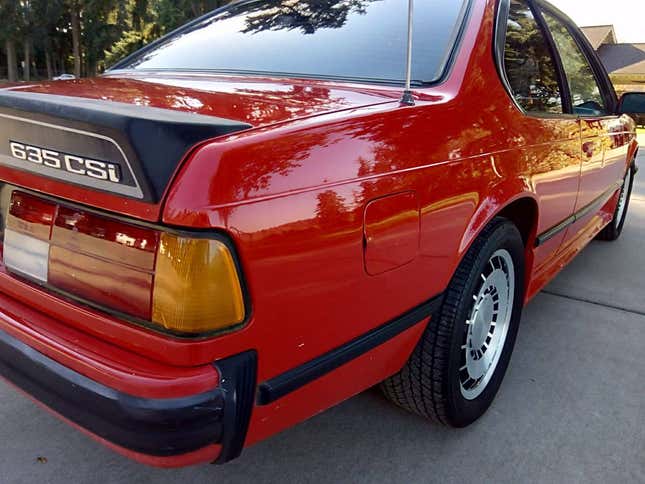
This 1980 635CSi is an E12-based car built at BMW’s Dingolfing plant. It’s also the small-bumper European model, meaning it offers unprotected Six. Aesthetically, that’s a good thing, as the car’s shark nose front end demanded a diving platform bumper for the American-spec models. The seller doesn’t tell us when the car came to the States but does claim a two-owner history and to have both service records and the original window sticker, so some info could be gleaned from the paperwork.
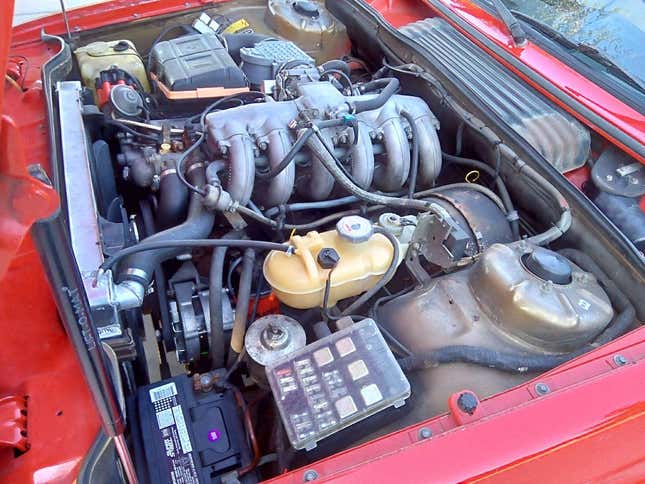
That would be helpful since it’s puzzling where this car was initially sold. As a Euro-spec car, its speedo and odometer should rightfully read metric, but this one sports mph and miles. There are 126,000 of the latter, although the car has been spruced up along the way, so those miles, or the years, aren’t apparent.
The red paint is a respray. The underhood shot gives away the car’s original gold color and a bit of telltale overspray. Around that, all the brightwork has been painted black, probably to make the car look more modern. Underneath sits a set of aftermarket wheels that also try to force a more contemporary style on the car but aren’t all that successful. Luckily, that’s a relatively simple fix.
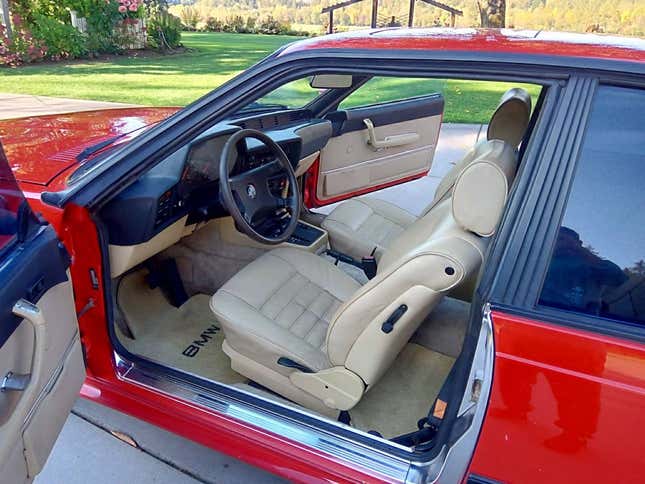
The cabin looks terrific, with no cracks in the dash nor tears in the upholstery. A true four-seater, those back seats also look as cozy as a hug from an old friend and seem in suitable shape.
Many of you might find the mechanicals less of a success story. The 218-horsepower M90 straight-six shouldn’t be a problem, but some of you may chafe at the ZF three-speed automatic that’s been paired with it. That makes the car a refined cruiser, and the seller claims no mechanical issues with the car whatsoever, so there’s that. It also comes with a clean title and a $6,750 asking price.
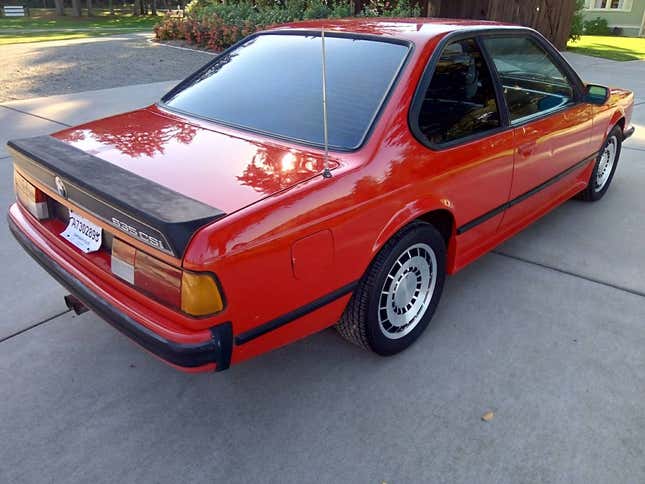
What’s your take on that price, is it low enough to make this grey market Six a sexy beast? Or, does make this big German nicht eine gute Fahrt?
You decide!
Seattle, Washington, Craigslist, or go here if the ad disappears.
Help me out with NPOND. Hit me up at [email protected] and send me a fixed-price tip. Remember to include your Kinja handle.

